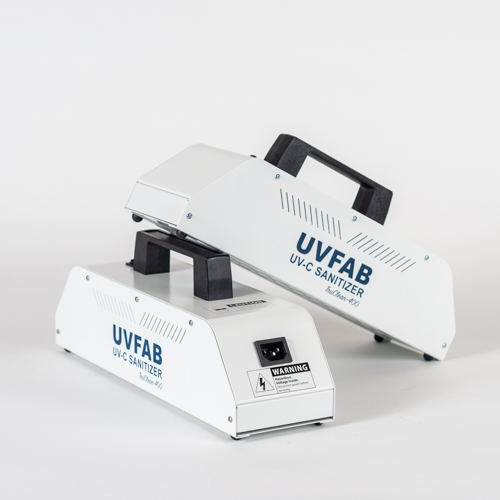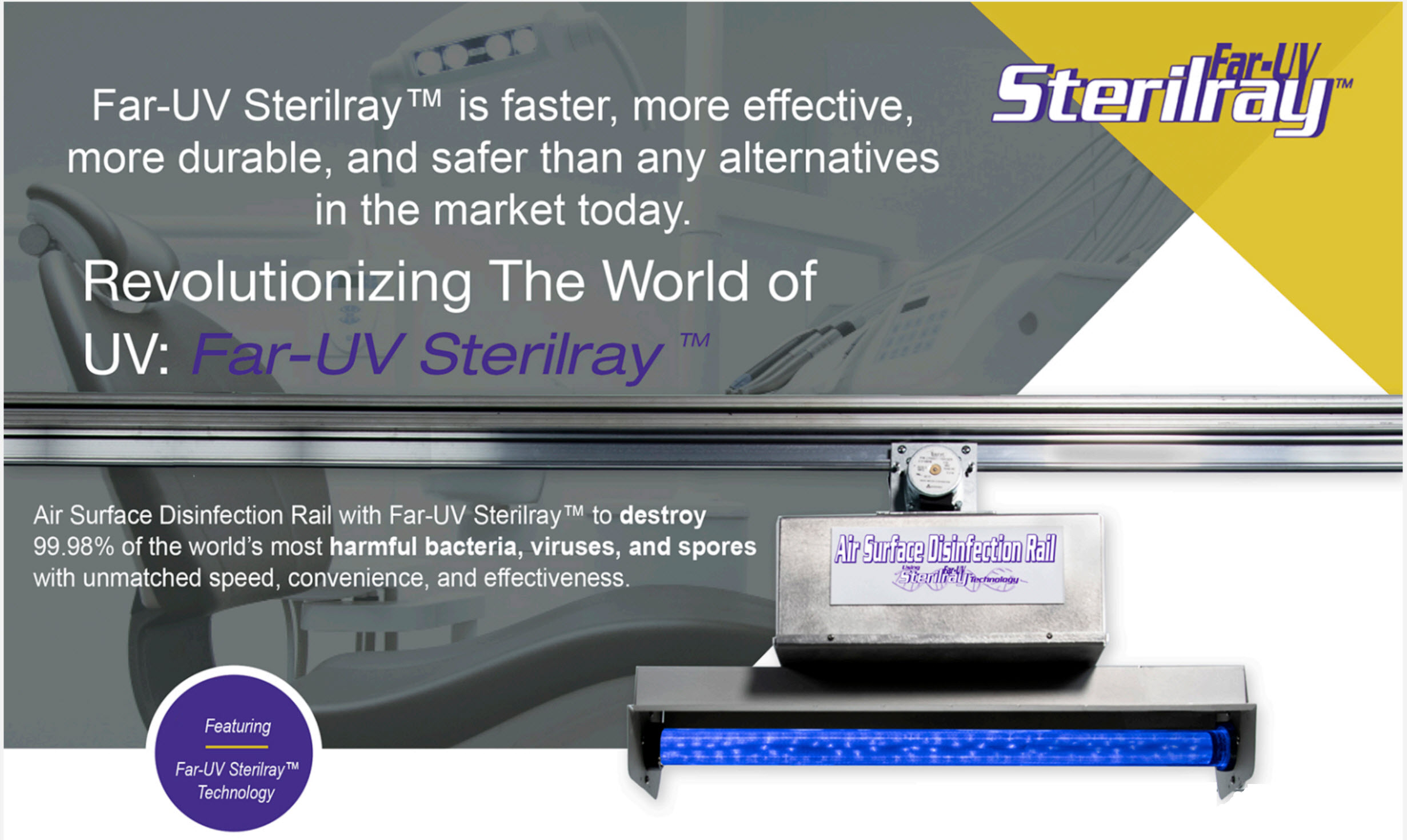Changing Hygiene Standards: The Role of UV Surface Disinfection in Health and Safety
Wiki Article
Unveiling the Conveniences of UV Disinfection: Ensuring Disinfected and tidy Areas
In the age of heightened understanding surrounding health and cleanliness, the relevance of efficient disinfection approaches can not be overstated. While typical cleansing techniques have actually long been trusted, innovations in innovation have actually introduced an innovative option that makes certain tidy and disinfected areas: UV disinfection. By using the power of ultraviolet light, this technique has actually acquired acknowledgment for its capability to get rid of damaging microorganisms and offer an extensive sanitization procedure. Nonetheless, the benefits of UV disinfection prolong much past its efficacy. This discussion will check out the scientific research behind UV disinfection, its effectiveness on various microorganisms, its applications in different settings, and the benefits it holds over conventional methods. Furthermore, we will dig right into the safety factors to consider that need to be thought about when carrying out UV sanitation. Prepare to reveal a brand-new dimension of cleanliness and find the untapped potential of UV disinfection.
The Science Behind UV Disinfection
UV disinfection is a medically tried and tested approach that uses ultraviolet light to get rid of dangerous microbes from surface areas and water. The science behind UV sanitation lies in the ability of UV-C light to damage the DNA and RNA of microbes, making them unable to reproduce and causing their ultimate fatality. UV-C light drops within the wavelength variety of 200 to 280 nanometers, which is highly effective in damaging germs, infections, and other virus.When revealed to UV-C light, the hereditary product of microbes takes in the energy from the light, causing the development of thymine dimers. These dimers interfere with the normal replication and transcription processes of the microorganisms, preventing their capability to make it through and duplicate (uv surface disinfection). The DNA and RNA damages created by UV-C light is dangerous to the microbes, making UV sanitation a reputable and reliable method for killing a large array of virus
UV sanitation is particularly advantageous in atmospheres where typical chemical anti-bacterials might be unwise or ineffective. It is a non-chemical approach that does not leave any kind of deposits or unsafe byproducts, making it secure for usage in food processing, healthcare facilities, water treatment plants, and various other industries. In addition, UV sanitation is ecologically friendly, as it does not add to the development of antibiotic-resistant microorganisms or various other harmful toxins.
Efficiency of UV Disinfection on Pathogens
The effectiveness of UV disinfection in removing pathogens has been thoroughly researched and verified in many scientific research studies. UV radiation has the ability to suspend a wide variety of microbes, consisting of microorganisms, infections, and fungis, by harming their DNA or RNA. This stops them from duplicating and creating infections.One study released in the American Journal of Infection Control found that UV disinfection worked in minimizing the visibility of multiple drug-resistant germs in health center rooms. One more study conducted by the National Institute for Occupational Safety and security and Health and wellness demonstrated that UV disinfection had the ability to remove 99.9% of the influenza virus on surface areas.
UV sanitation has likewise revealed promise in combating the spread of healthcare-associated infections (HAIs) According to a research study released in The Lancet, using UV-C light in addition to standard cleaning methods significantly reduced the incidence of HAIs in a health center setting.
Moreover, UV sanitation has verified to be reliable versus emerging pathogens, such as the severe acute respiratory system syndrome coronavirus 2 (SARS-CoV-2), which creates COVID-19. A research performed by the National Arising Transmittable Conditions Laboratories showed that UV-C light can suspend the infection on surface areas within secs.
Applications of UV Sanitation in Various Setups
With its proven effectiveness in eliminating pathogens, UV disinfection has found applications in a range of settings. One of one of the most usual locations where UV sanitation is used remains in medical care centers. UV technology is used to decontaminate person areas, running spaces, and other high-touch surfaces, reducing the threat of healthcare-associated infections. In enhancement, UV sanitation is also being implemented in food processing plants and restaurants to guarantee the safety of food and prevent the spread of foodborne health problems. UV disinfection is additionally advantageous in water treatment plants, where it is utilized to eliminate hazardous microbes and offer risk-free drinking water.Another important application of UV sanitation is in the air filtration industry. UV air purifiers are used in domestic, industrial, and industrial settings to eliminate blog here airborne germs, viruses, and mold spores. This technology is especially helpful in settings where individuals are extra susceptible to breathing infections, such as medical facilities, colleges, and office buildings.
In addition, UV view disinfection is significantly being used in public transport systems, such as buses and trains, to preserve tidy and sanitized areas for passengers. UV light is used to decontaminate surface areas and air inside the lorries, reducing the threat of spreading infectious diseases.
Advantages of UV Disinfection Over Conventional Techniques
In comparison to typical methods, UV disinfection offers a range of distinctive advantages that make it a better choice in numerous industries and setups. One considerable advantage is its performance against a large variety of microbes, consisting of germs, viruses, and fungi. Unlike chemical disinfectants that may have restricted efficiency versus particular virus, UV sanitation is a non-selective procedure that can eliminate or suspend a broad spectrum of harmful microorganisms.
Another benefit of UV sanitation is its capability to offer efficient and rapid sanitation. Standard sanitation techniques typically require longer get in touch with times or multiple steps to accomplish the preferred level of disinfection. In comparison, UV light can provide instant and continual sanitation, decreasing downtime and boosting productivity in numerous applications.
UV sanitation likewise provides a ecologically friendly and safe alternative to traditional sanitation approaches. uv surface disinfection. Unlike chemical representatives, UV light does not leave any type of unsafe deposits or spin-offs, making it suitable for use in delicate environments such as food processing facilities, health care setups, and water therapy plants
In addition, UV disinfection is a cost-effective option over time. While the ahead of time financial investment for UV disinfection systems may be greater than conventional approaches, the functional costs are typically lower. UV lights have a lengthy life expectancy and require very little upkeep, leading to minimized labor and replacement costs.
Safety And Security Considerations for UV Disinfection
Thinking about the potential dangers related to UV sanitation, it is necessary to resolve the safety factors to consider included in executing this modern technology. UV disinfection uses ultraviolet light to eliminate or inactivate bacteria, making it a reliable method for sterilizing numerous surface areas and items. It is essential to comprehend that UV radiation can additionally posture risks to human health and wellness if appropriate safety and security measures are not complied with.Firstly, direct exposure to UV radiation can trigger harm to the skin and eyes. Prolonged exposure can lead to sunburn, skin damage, and also an increased danger of creating skin cancer cells. It is crucial to ensure that UV sanitation systems are properly confined and outfitted with safety and security attributes such as automated shut-off systems or movement sensing units to stop accidental direct exposure.

Moreover, proper training and education are essential for those in charge of operating UV sanitation systems. They ought to understand the potential risks, recognize the security methods, and know just how to handle and preserve the equipment properly.
Verdict
UV disinfection can be applied in different settings, including health care facilities, food processing plants, and water therapy systems. Contrasted to standard approaches, UV sanitation has benefits such as faster sanitation times, minimal chemical usage, and no damaging by-products.UV sanitation is a medically tested approach that makes use of ultraviolet light to get rid of harmful microbes from surfaces and water. The DNA and RNA damage triggered by UV-C light is deadly to the microbes, making UV sanitation a reliable and reliable technique for eliminating a broad array of virus.
One more advantage of UV sanitation is its capacity to supply reliable and fast disinfection. UV sanitation uses ultraviolet light to eliminate or inactivate bacteria, making it an efficient method for sanitizing different surfaces and things. Contrasted to conventional approaches, UV sanitation has advantages such as faster disinfection times, marginal chemical usage, and no damaging byproducts.
Report this wiki page